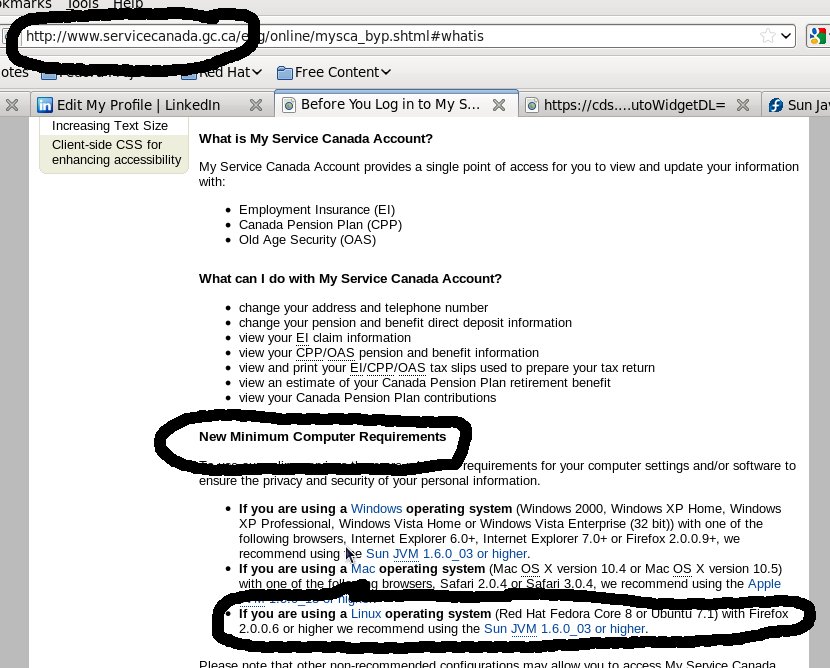I just did a tally of all the installs I’ve done on my personal systems since the end of June, 2008, when I bought a new-to-me desktop and took advantage of the opportunity to upgrade from the CentOS 4.x series (to the CentOS 5.x series. 🙂 ). And I was a bit blown over; unfortunately, not surprised, but blown over nonetheless.
Over 5 systems, I’ve done 16 successful installs; then there were a few dud installs that had to be restarted right away, although a couple of said duds were counted because the installs were actually useful for a few weeks, including one not counted as a successful install during the most recent cycle despite the fact that it was a successful install; unfortunately, the boot sector on the drive died (it was to be expected, back last June or July, Palimptest identified the drive as having a fatal error on it, and the drive was declared as having about 6 months to live, and whaddya know!) so I had to get another “new” drive, which I happened to have handy, and do another install.
To be fair, there has been one factory sealed new system thrown in there (what fun to wipe the Windows install, which curiously, apparently irreparably froze up after all the updates were done, the whole thing to be able to say “yeah, but Windows worked on it!” — which it didn’t!), another system that just about hasn’t been used since and after a few months has now been removed from the upgrade cycle, another system that finally died or at least on whose ghost I have given up, and a finally a replacement system for said “death in the family”.
One of the reasons why I always say “I’d love to go back to CentOS if it weren’t so hopelessly obsolete” is that it’s stable and has a long life to it (something like typically 7 years) — Fedora *has* been good to me since I started using it from version 9, and hence with CentOS you don’t have to upgrade every six months like with Fedora — oops, that’s every 12 months or so — given the support cycle (wink wink). 🙂
Problem is that when you have several systems, you’re still doing installs every 6 months or so if the systems aren’t in sync with each other; further one of the consequences of using second hand or third hand computers, buying new computers, upgrading parts and hard drives, and even trying out another distro at least once is that your systems are hardly every likely to be in sync for the whole 13 months or so lifespan of a new-version-released-every-6-months distro like Fedora. And of course, that someone who would like to avoid having to do new installs every 6 months is going to upgrade a system that is out of sync to bring it in line with the others in the hopes that “this will be the cycle when I get to enjoy the whole lifespan and not have to upgrade 6 months from now”.
Hence the ideal of trying to avoid the “install every 6 month habit” by syncing the installs with each other when a single new install is done in order to hopefully avoid having to reinstall in 6 months is fallacious when you have at least two systems — in fact, you end up doing the opposite since you not only are installing (or re-installing) at least once every six months for one legitimate reason or another, but you end up doing multiple installs, many of which are unnecessary in and of themselves, every 6 months, just to keep everything in sync. And as such, the “install every 6 month habit”.
Of course, I have often been enjoying the process despite myself; in fact, I’ve managed to put together an ever-increasingly long list of steps to take from start to finish when installing a system (which I’ll be presenting to one of the local LUGs in a few weeks.) Fortunately, my computers are purely home desktops or hobby servers without any critical processes on them, and my brother at least humours my habit by doing those little bits that are still beyond my ever-increasing sysadmin skill set (which of course is growing with each install cycle). And in the process I’m gaining a practical appreciation for what I’ve known all along since I started using Linux in 2006 and started using CentOS: The likes of Fedora and Ubuntu may be great, but you have to re-install every 6 months! Who wants to do that?!?!” (Apparently, I do. 🙂 )
It must be interesting having multiple production servers with multiple versions of a given distro, let alone more than one distro (ie. a mix of CentOS, Debian, SuSE, and for some good fun, Slackware). Good thing that usually having “the latest and greatest” usually isn’t as particularly important on a server so that it can actually have a useful life. Must be hard for the likes of Red Hat, for instance, when it must add new drivers all the time, but in order to keep from breaking compatibility and adding “bad change” into the distro other things don’t happen (things like the HPLIP version that is one incremental subversion or whatever it 0.x increments are called behind the minimum requirements for my 2.5 year old printer, and which has since gone through several such incremental upgrades and at least a whole version upgrade since.)

